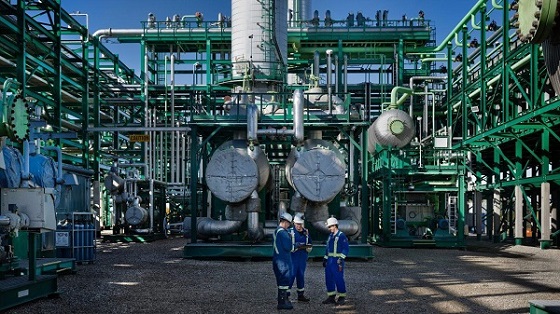Automotive
From Nazis to hippies: End of the road for Volkswagen Beetle

FRANKFURT — Volkswagen is halting production of the last version of its Beetle model this week at its plant in Puebla, Mexico. It’s the end of the road for a vehicle that has symbolized many things over a history spanning eight decades since 1938.
It has been: a part of Germany’s darkest hours as a never-realized Nazi prestige project. A symbol of Germany’s postwar economic renaissance and rising middle-class prosperity. An example of globalization, sold and recognized all over the world. An emblem of the 1960s counterculture in the United States. Above all, the car remains a landmark in design, as recognizable as the Coca-Cola bottle.

The car’s original design — a rounded silhouette with seating for four or five, nearly vertical windshield and the air-cooled engine in the rear — can be traced back to Austrian engineer Ferdinand Porsche, who was hired to fulfil Adolf Hitler’s project for a “people’s car” that would spread auto ownership the way the Ford Model T had in the U.S.

Aspects of the car bore similarities to the Tatra T97, made in Czechoslovakia in 1937, and to sketches by Hungarian engineer Bela Barenyi published in 1934. Mass production of what was called the KdF-Wagen, based on the acronym of the Nazi labour organization under whose auspices it was to be sold, was cancelled due to World War II. Instead, the massive new plant in what was then countryside east of Hanover turned out military vehicles, using forced labourers from all over Europe under miserable conditions.
Re-launched as a civilian carmaker under supervision of the British occupation authorities, the Volkswagen factory was transferred in 1949 to the Germany government and the state of Lower Saxony, which still owns part of the company. By 1955, the millionth Beetle — officially called the Type 1 — had rolled off the assembly line in what was now the town of Wolfsburg.

The United States became Volkswagen’s most important foreign market, peaking at 563,522 cars in 1968, or 40% of production. Unconventional, sometimes humorous advertising from agency Doyle Dane Bernbach urged car buyers to “Think small.”
“Unlike in West Germany, where its low price, quality and durability stood for a new postwar normality, in the United States the Beetle’s characteristics lent it a profoundly unconventional air in a car culture dominated by size and showmanship,” wrote Bernhard Rieger in his 2013 history, “The People’s Car.”
Production at Wolfsburg ended in 1978 as newer front drive models like the Golf took over. But the Beetle wasn’t dead yet. Production went on in Mexico from 1967 until 2003 — longer than the car had been made in Germany. Nicknamed the “vochito,” the car made itself at home as a rugged, Mexican-made “carro del pueblo.”

The New Beetle — a completely retro version build on a modified Golf platform — resurrected some of the old Beetle’s cute, unconventional aura in 1998 under CEO Ferdinand Piech, Ferdinand Porsche’s grandson. In 2012, the Beetle’s design was made a bit sleeker.

The end of the Beetle comes at a turning point for Volkswagen as it rebounds from a scandal over cars rigged to cheat on diesel emissions tests. The company is gearing up for mass production of the battery-driven compact ID.3, a car that the company predicts will have an impact like that of the Beetle and the Golf by bringing electric mobility to a mass market.
The last of 5,961 Final Edition versions of the Beetle is headed for a museum after ceremonies in Puebla on July 10 to mark the end of production.
___
AP photo blog about the last Volkswagen Beetle: https://bit.ly/32bXuMx
David McHugh, The Associated Press
Automotive
America’s EV Industry Must Now Compete On A Level Playing Field


From the Daily Caller News Foundation
America’s carmakers face an uncertain future in the wake of President Donald Trump’s signing of the One Big Beautiful Bill Act (OBBBA) into law on July 4.
The new law ends the $7,500 credit for new electric vehicles ($4,000 for used units) which was enacted as part of the 2022 Inflation Reduction Act as of September 30, seven years earlier than originally planned.
The promise of that big credit lasting for a full decade did not just improve finances for Tesla and other pure-play EV companies: It also served as a major motivator for integrated carmakers like Ford, GM, and Stellantis to invest billions of dollars in capital into new, EV-specific plants, equipment, and supply chains, and expand their EV model offerings. But now, with the big subsidy about to expire, the question becomes whether the U.S. EV business can survive in an unsubsidized market? Carmakers across the EV spectrum are about to find out, and the outlook for most will not be rosy.
These carmakers will be entering into a brave new world in which the market for their cars had already turned somewhat sour even with the subsidies in place. Sales of EVs stalled during the fourth quarter of 2024 and then collapsed by more than 18% from December to January. Tesla, already negatively impacted by founder and CEO Elon Musk’s increased political activities in addition to the stagnant market, decided to slash prices in an attempt to maintain sales momentum, forcing its competitors to follow suit.
But the record number of EV-specific incentives now being offered by U.S. dealers has done little to halt the drop in sales, as the Wall Street Journal reports that the most recent data shows EV sales falling in each of the three months from April through June. Ford said its own sales had fallen by more than 30% across those three months, with Hyundai and Kia also reporting big drops. GM was the big winner in the second quarter, overtaking Ford and moving into 2nd place behind Tesla in total sales. But its ability to continue such growth absent the big subsidy edge over traditional ICE cars now falls into doubt.
The removal of the per-unit subsidies also calls into question whether the buildout of new public charging infrastructure, which has accelerated dramatically in the past three years, will continue as the market moves into a time of uncertainty. Recognizing that consumer concern, Ford, Hyundai, BMW and others included free home charging kits as part of their current suites of incentives. But of course, that only works if the buyer owns a home with a garage and is willing to pay the higher cost of insurance that now often comes with parking an EV inside.
Decisions, decisions.
As the year dawned, few really expected the narrow Republican congressional majorities would show the political will and unity to move so aggressively to cancel the big IRA EV subsidies. But, as awareness rose in Congress about the true magnitude of the budgetary cost of those provisions over the next 10 years, the benefit of getting rid of them ultimately subsumed concerns about the possible political cost of doing so.
So now, here we are, with an EV industry that seems largely unprepared to survive in a market with a levelized playing field. Even Tesla, which remains far and away the leader in total EV sales despite its recent struggles, seems caught more than a little off-guard despite Musk’s having been heavily involved in the early months of the second Trump presidency.
Musk’s response to his disapproval of the OBBBA was to announce the creation of a third political party he dubbed the American Party. It seems doubtful this new vanity project was the response to a looming challenge that members of Tesla’s board of directors would have preferred. But it does seem appropriately emblematic of an industry that is undeniably limping into uncharted territory with no clear plan for how to escape from existential danger.
We do live in interesting times.
David Blackmon is an energy writer and consultant based in Texas. He spent 40 years in the oil and gas business, where he specialized in public policy and communications.
Automotive
Federal government should swiftly axe foolish EV mandate

From the Fraser Institute
Two recent events exemplify the fundamental irrationality that is Canada’s electric vehicle (EV) policy.
First, the Carney government re-committed to Justin Trudeau’s EV transition mandate that by 2035 all (that’s 100 per cent) of new car sales in Canada consist of “zero emission vehicles” including battery EVs, plug-in hybrid EVs and fuel-cell powered vehicles (which are virtually non-existent in today’s market). This policy has been a foolish idea since inception. The mass of car-buyers in Canada showed little desire to buy them in 2022, when the government announced the plan, and they still don’t want them.
Second, President Trump’s “Big Beautiful” budget bill has slashed taxpayer subsidies for buying new and used EVs, ended federal support for EV charging stations, and limited the ability of states to use fuel standards to force EVs onto the sales lot. Of course, Canada should not craft policy to simply match U.S. policy, but in light of policy changes south of the border Canadian policymakers would be wise to give their own EV policies a rethink.
And in this case, a rethink—that is, scrapping Ottawa’s mandate—would only benefit most Canadians. Indeed, most Canadians disapprove of the mandate; most do not want to buy EVs; most can’t afford to buy EVs (which are more expensive than traditional internal combustion vehicles and more expensive to insure and repair); and if they do manage to swing the cost of an EV, most will likely find it difficult to find public charging stations.
Also, consider this. Globally, the mining sector likely lacks the ability to keep up with the supply of metals needed to produce EVs and satisfy government mandates like we have in Canada, potentially further driving up production costs and ultimately sticker prices.
Finally, if you’re worried about losing the climate and environmental benefits of an EV transition, you should, well, not worry that much. The benefits of vehicle electrification for climate/environmental risk reduction have been oversold. In some circumstances EVs can help reduce GHG emissions—in others, they can make them worse. It depends on the fuel used to generate electricity used to charge them. And EVs have environmental negatives of their own—their fancy tires cause a lot of fine particulate pollution, one of the more harmful types of air pollution that can affect our health. And when they burst into flames (which they do with disturbing regularity) they spew toxic metals and plastics into the air with abandon.
So, to sum up in point form. Prime Minister Carney’s government has re-upped its commitment to the Trudeau-era 2035 EV mandate even while Canadians have shown for years that most don’t want to buy them. EVs don’t provide meaningful environmental benefits. They represent the worst of public policy (picking winning or losing technologies in mass markets). They are unjust (tax-robbing people who can’t afford them to subsidize those who can). And taxpayer-funded “investments” in EVs and EV-battery technology will likely be wasted in light of the diminishing U.S. market for Canadian EV tech.
If ever there was a policy so justifiably axed on its failed merits, it’s Ottawa’s EV mandate. Hopefully, the pragmatists we’ve heard much about since Carney’s election victory will acknowledge EV reality.
-

 Business18 hours ago
Business18 hours agoMost Canadians say retaliatory tariffs on American goods contribute to raising the price of essential goods at home
-

 National1 day ago
National1 day agoWomen and girls beauty pageant urges dismissal of transgender human rights complaint
-

 Alberta18 hours ago
Alberta18 hours agoCross-Canada NGL corridor will stretch from B.C. to Ontario
-

 International2 days ago
International2 days agoSupport for the Ukraine war continues because no one elected is actually in charge.
-

 Business2 days ago
Business2 days agoTrump slaps Brazil with tariffs over social media censorship
-

 Business2 days ago
Business2 days agoCBC six-figure salaries soar
-

 Business19 hours ago
Business19 hours agoB.C. premier wants a private pipeline—here’s how you make that happen
-

 Addictions2 days ago
Addictions2 days agoCan addiction be predicted—and prevented?




